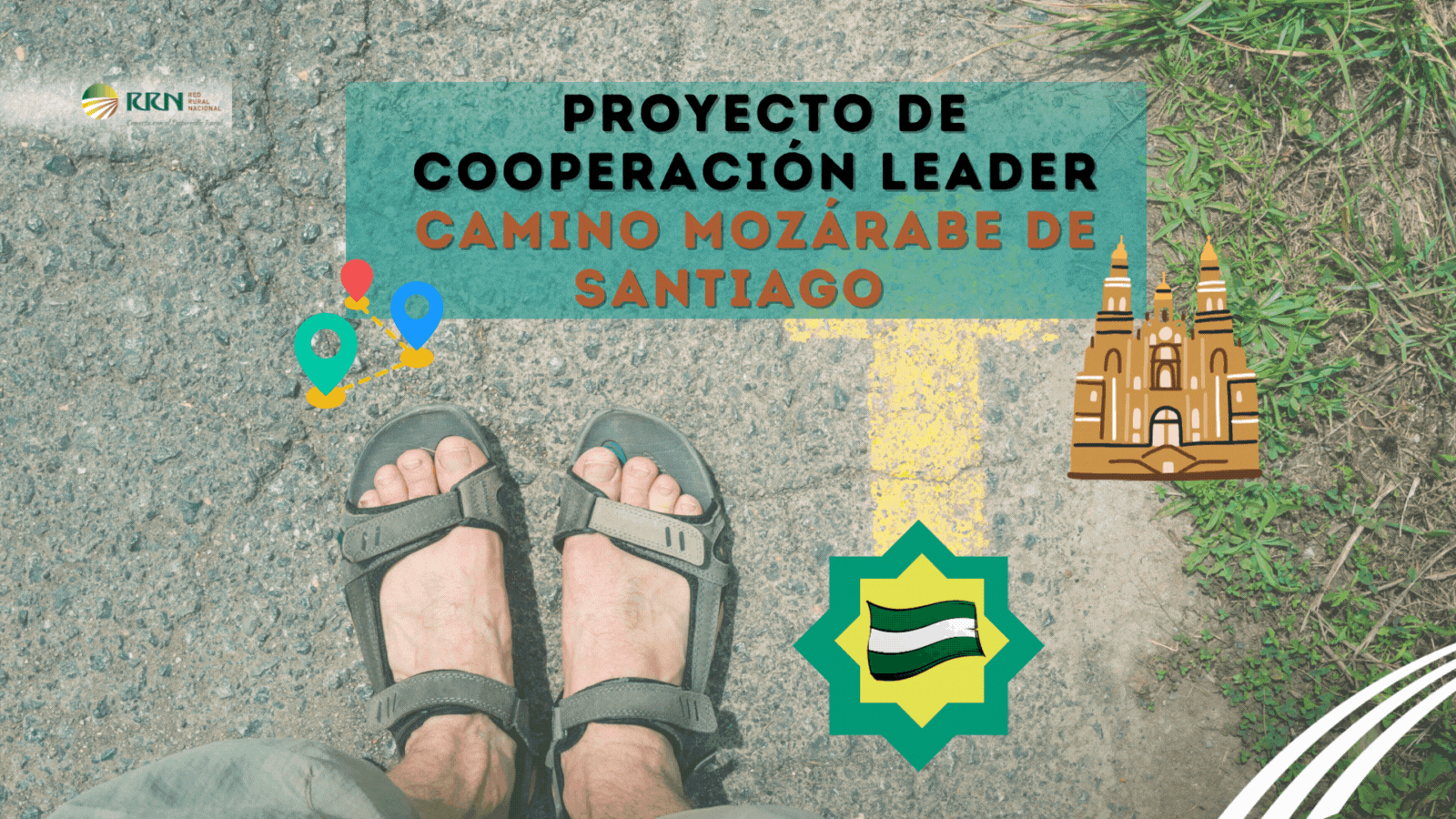
30 de March de 2023
The GALs aim to create an innovative planning and management model for this historic route, which originates in Al-Andalus and connects some of Andalusia's major cities with Santiago de Compostela.
- This is a route of the Camino de Santiago with centuries of history that starts in Andalusia
- The project brings together the actions of all the Local Action Groups (LAG) of the autonomous community
- The objective is to unify resources and create a reference point for tourism.
For centuries, millions of pilgrims have undertaken their journey to the Galician city of Santiago de Compostela , on what is one of the most famous routes in the world and a traditional Christian itinerary that is part of the culture and traditions of several regions of Spain. One of them, although this tradition is not well-known in these parts, is Andalusia.
The Mozarabic Way is a route that connects some of the main Andalusian cities, such as Almería, Málaga, Granada, Jaén, and Córdoba, with Mérida, and from there, continues to Santiago de Compostela. Its historical origins date back to the Christians who followed this route during the period of Al-Andalus , under Muslim rule, during the Middle Ages.
To promote this cultural value and put this important pedestrian route on the map, a series of Local Action Groups ( LAGs ) in Andalusia are carrying out a LEADER cooperation project whose action plan focuses on consolidating a cooperation network . They aim to create an innovative planning and management model within the framework of the Camino de Santiago, based on the model proposed in the Council of Europe's Cultural Route .
Objectives and measures
This project has united the GALs primarily to “promote and enhance the Mozarabic Way of St. James, ” Ervigio Núñez Adán, manager of the Sierra Morena Cordobesa GAL , a group that acts as coordinator for the rest, tells the National Rural Network ( RRN ) .
“For me, cooperation is fundamental,” he notes regarding this cooperative approach. “On an issue like the Camino, you can't carry out individual projects with different signage and protocols.” He also explains that this way, “with fewer resources, we achieve the same result,” and reaffirms that cooperation “is a fundamental pillar of LEADER.”
An example of this collaborative work is the Security Plan they have developed for this project, which provides all of Andalusia with a single protocol to protect pilgrims.
The project has a series of lines of action:
1. Facilitate the movement of people on the Camino : improving the quality of the facilities and transitability.
2. Enhance the safety of the Camino : they have added more signage and developed the aforementioned Safety Plan.
3. Promote gender equality : promoting the use of the Camino for women as a place of meeting, knowledge, participation and recognition
4. Complement and diversify tourism and cultural activities : they carry out activities to promote, disseminate, revitalize, and enhance the value of the route, as well as a process of strengthening the relationship between territories to promote the route as an element of tourism development.
In addition, work has been done to create synergies with other tourist resources in the areas through which the Camino runs.
But why implement this plan on the Mozarabic Way? "For several reasons," emphasizes Núñez Adán. "This gives us pilgrims during the week," something that boosts rural hotel occupancy at a time when it's often difficult. He also emphasizes that it helps the development of small towns traditionally overlooked on tourist routes and now found themselves part of that circuit; it fosters job creation and positions Andalusia as a brand as powerful as the Camino de Santiago, something that wouldn't be taking advantage of without this project.
Thus, the project aims to foster these synergies, achieve uniform signage and hostels, and create greater cultural identity by highlighting a Camino with centuries of history and linked to the Mozarabic aspect already deeply embedded in Andalusian culture.
“Trails, resources, flora and fauna, gastronomy, stars… These are complementary activities that already existed but are now unified,” he says, referring to what has already been achieved, which extends to the organization of events such as a race on the Camino, the implementation of more activities, and collaboration between different provinces.
Members and funding
This LEADER cooperation project, coordinated by the GAL Sierra Morena Cordobesa, also includes the following groups: Guadajoz-Campiña Este , Subbética , Los Pedroches , Northwest Arc of the Vega de Granada , Poniente Granadino , Antequera , Northeastern Territory of Malaga , Alpujarra-Almeriense , Guadalhorce Valley , Filabres-Alhamilla and Vega Sierra Elvira .
Its total budget is €293,382.86, 90% financed by the European Union's EAFRD fund and 10% by the Andalusian Regional Government.











